1. The Neon Glow and the Buzzing Room
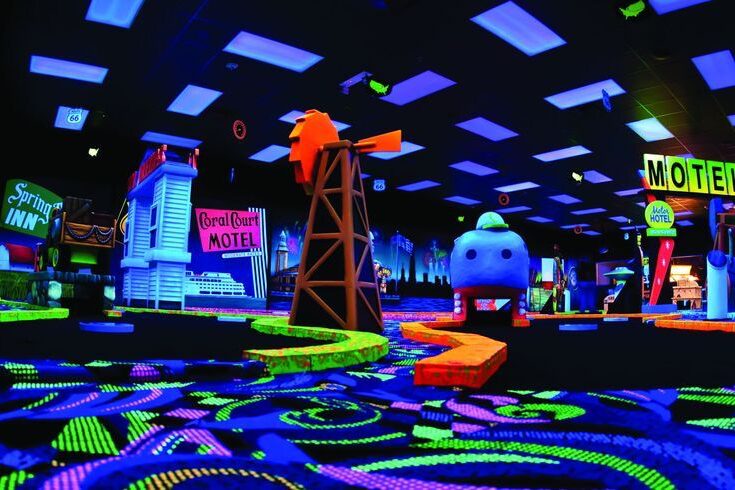
Arcades of the late ’70s and early ’80s were a sensory explosion, a dark, cool sanctuary where everything seemed to hum with electrical life. The darkness was broken only by the flickering cathode-ray tube (CRT) screens and the brightly colored side-art of the cabinets. Games like TRON (1982) and Star Wars (1983) utilized mesmerizing light-up controls and vivid graphic displays, painting the walls in shifting washes of blue, red, and green. This specific aesthetic was no accident; it was designed to be immersive, drawing kids away from the mundane world and into a universe where they could become heroes. The air was thick with the faint scent of machine heat, stale popcorn, and a palpable current of competition that made every visit feel like stepping into a futuristic carnival.
2. Quarters as the High-Stakes Currency
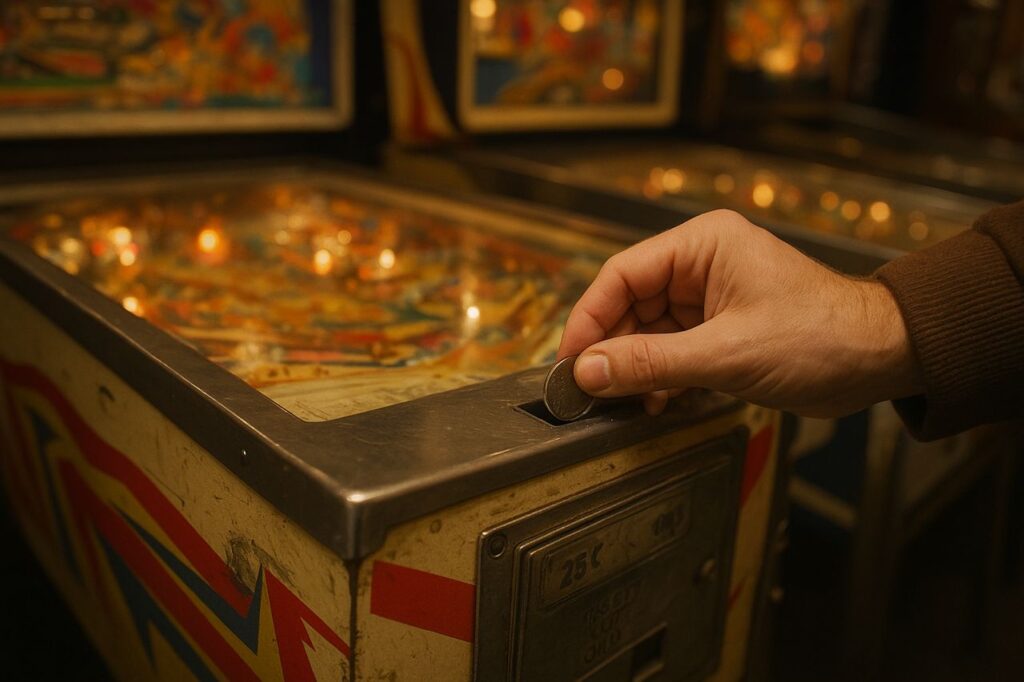
Before credit cards and digital wallets, the standard unit of arcade currency was the quarter ($0.25), and every kid’s allowance was measured in these precious, jangling coins. The simple act of placing a quarter on the console bezel, the plastic border around the screen, was a silent, universal declaration that you had “next game” and were ready to challenge the current player. Budgeting was a critical, early lesson in economics; you had to decide if you would risk three quarters on a difficult game like Robotron: 2084 for a few minutes of glory or stretch your funds on a more forgiving game like Dig Dug. The weight and sound of a pocketful of quarters was the sound of possibility, a tangible representation of your power to play, making each coin a ticket to joy and a high-stakes gamble on your own skill.
3. Change Machines and Token Cups
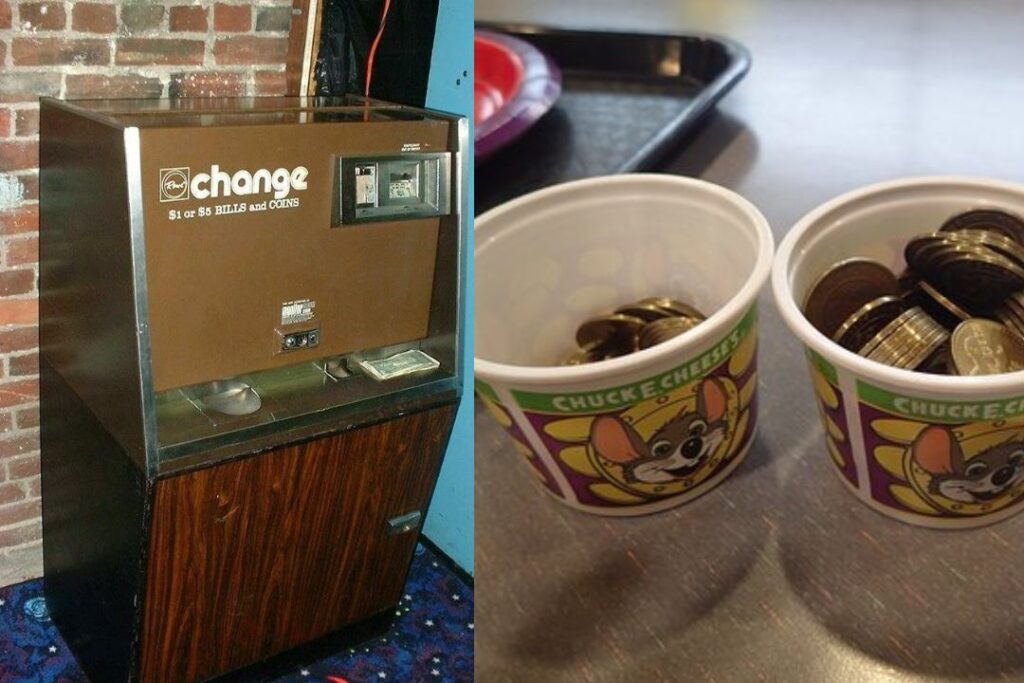
The ritual began at the change machine, a hulking, mechanical ATM of fun that would ingest a crumpled dollar bill and satisfyingly spit out a cascade of four shiny quarters. Some arcades, particularly chains like Chuck E. Cheese’s or ShowBiz Pizza Place, would use specialized brass or plastic tokens instead of quarters to encourage players to keep their money within the establishment. Clutching a small, plastic cup overflowing with these coins or tokens was a moment of pure, unadulterated wealth. The distinctive, clinking sound they made as you walked past the rows of machines was a core part of the arcade’s sonic landscape, an anthem of anticipation. This practice also created a psychological distinction; because tokens couldn’t be spent outside the arcade, they felt like play money, encouraging kids to spend them more freely.
4. Pac-Man and the Ghost Frenzy
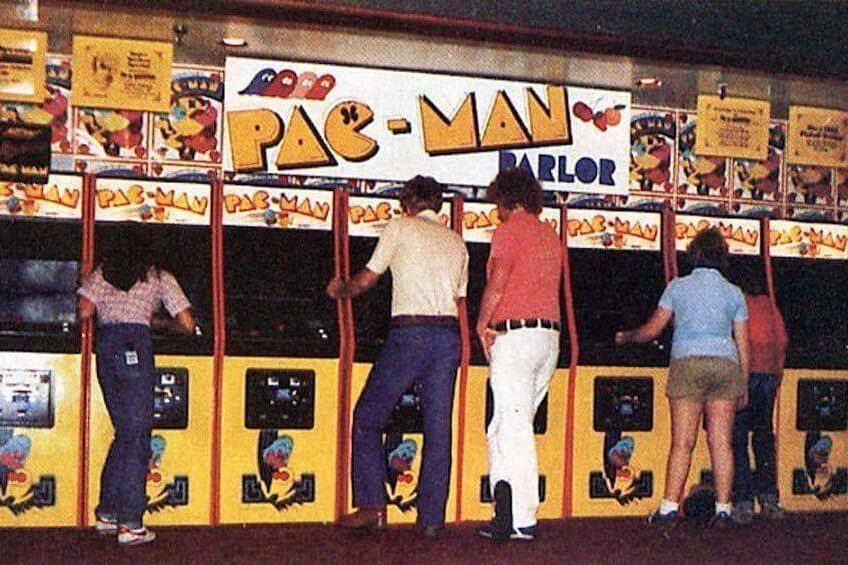
No game defined the early 1980s arcade experience like Pac-Man (1980). Designed by Toru Iwatani for Namco, the yellow, pie-shaped hero was a cultural phenomenon that quickly transcended the arcade scene, leading to the coining of the term “Pac-Man Fever.” Its arrival marked a shift from abstract space shooters to character-based, maze-chase gameplay, making it uniquely accessible and popular with girls as well as boys. Crowds would regularly form around the bright yellow cabinet, mesmerized by the simple-yet-addictive goal of clearing dots while avoiding the four distinct ghosts: Blinky, Pinky, Inky, and Clyde. Players devoted countless hours to memorizing the ghost AI and their unique movement patterns, attempting to achieve the elusive perfect score of 3,333,360, cementing Pac-Man’s status as the definitive icon of the era.
5. Space Invaders and Asteroids Define a Genre
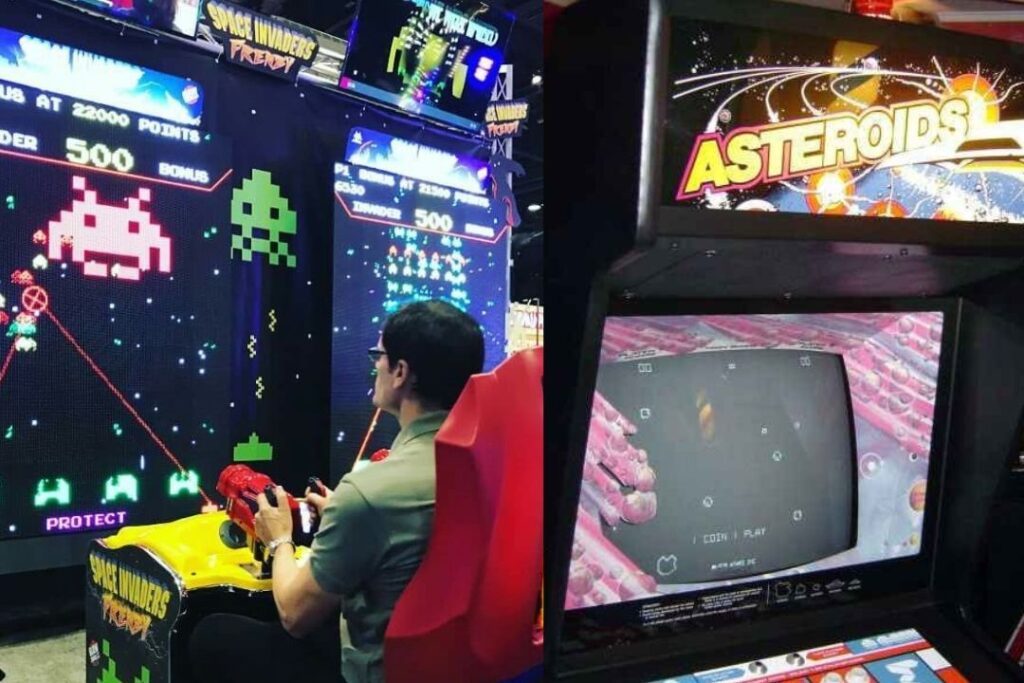
The late 1970s laid the foundation for the entire industry, primarily with the arrival of two genre-defining games: Space Invaders (Taito, 1978) and Asteroids (Atari, 1979). Space Invaders, the first truly massive global hit, popularized the concept of a “fixed shooter” and introduced the high-score counter, forcing players into frantic, single-plane battles against descending rows of pixelated aliens. This game was so popular it reportedly caused a temporary coin shortage in Japan due to the sheer number of 100-yen coins being fed into the cabinets. Asteroids followed a year later, utilizing vector graphics, glowing lines instead of solid pixels, to create a distinct, wireframe look. Its frantic, gravity-defying gameplay and unique triangle-shaped spaceship demanded quick reflexes and mastery of its rotational controls, establishing the foundation of space-based action for the decade to come.
6. Donkey Kong and Mario’s Debut
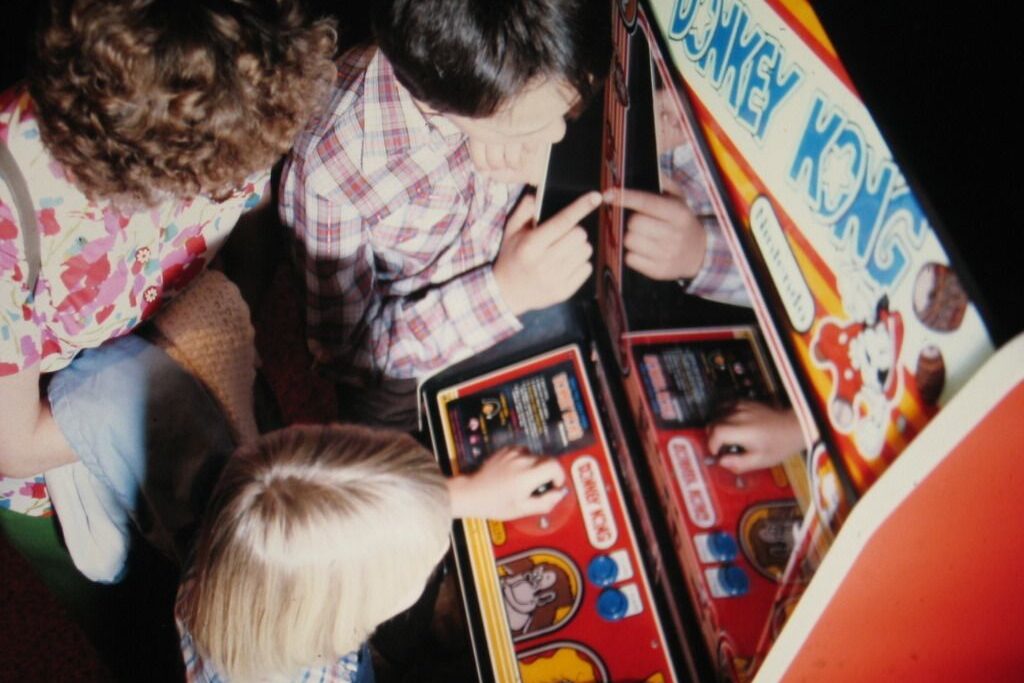
The year 1981 delivered a cultural bombshell in Donkey Kong, a game that not only created the “platformer” genre but also introduced two of gaming’s most enduring characters. Originally intended as a Popeye game, designer Shigeru Miyamoto pivoted to create the girder-climbing hero, Jumpman (later renamed Mario), and his giant, barrel-tossing gorilla nemesis, Donkey Kong. The game was a distinct break from the single-screen shooter, offering four unique, rotating levels that required precise timing to avoid fireballs, scale broken ladders, and dodge the iconic rolling barrels. Mastering the various heights and obstacles to save the damsel, Pauline, was a difficult challenge that quickly became a badge of honor, establishing a narrative-driven sense of achievement that captivated kids and solidified the character-based future of gaming.
7. Galaga’s Hypnotic Dual-Fighter Action
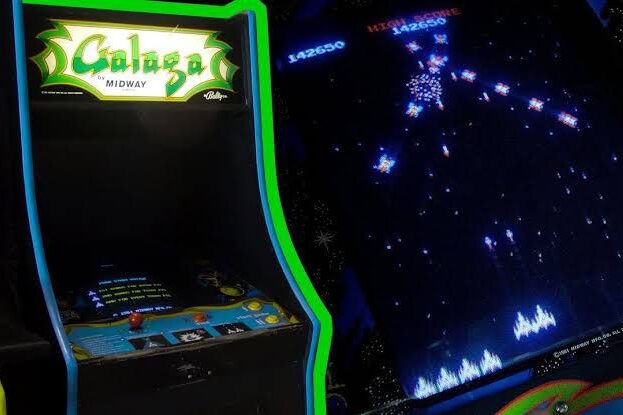
Following the smash success of its predecessor, Galaxian (1979), Namco’s Galaga (1981) took the vertical space shooter genre to a new, addictive level. The core gameplay involved blasting formations of insect-like aliens, but Galaga introduced a unique and thrilling risk-reward mechanic: the “challenging stage” and the Capture Beam. During the beam attack, a player could choose to let their ship be captured, then use their next ship to destroy the captor and rescue their original fighter, resulting in a powerful, double-barreled ship with twice the firepower. This dual-fighter mechanic was incredibly powerful but left the player vulnerable for a critical moment, turning the hypnotic rhythm of dodging and blasting into a thrilling trance that made entire afternoons disappear in a single, prolonged gaming session.
8. Missile Command and Cold War Anxiety
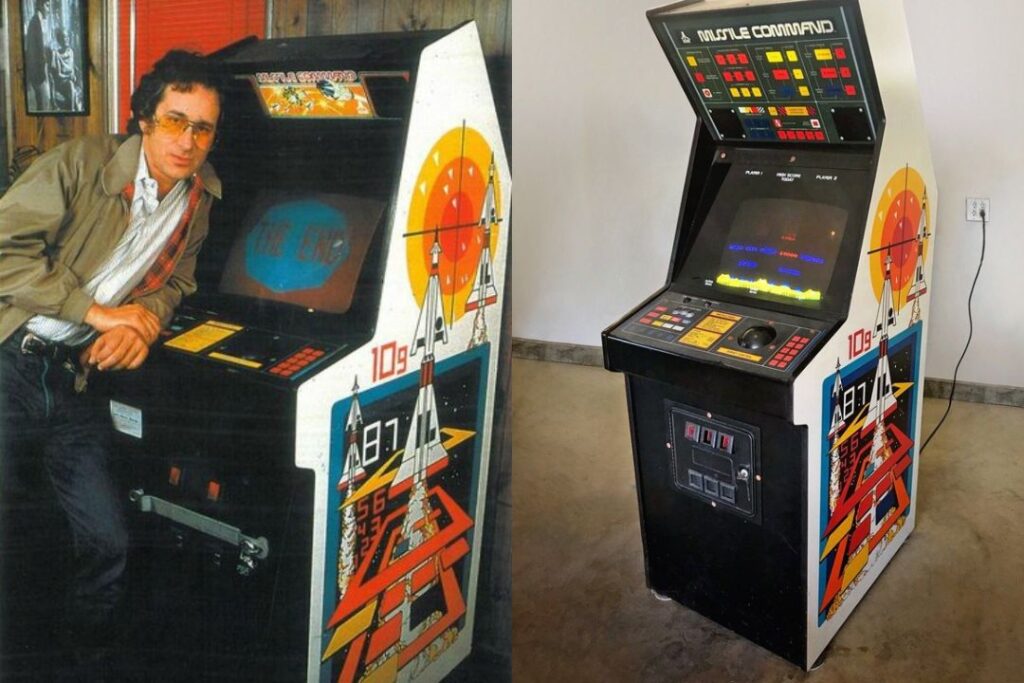
Released by Atari in 1980, Missile Command was one of the few games of the era that directly tapped into real-world geopolitical tension: the palpable dread of the Cold War. The game put players in command of three anti-missile bases, tasked with defending six cities from an endless, raining volley of enemy ballistic missiles. Players used a trackball to quickly aim and fire interceptor rockets, creating beautiful, blooming explosions across the dark, triangular vector graphic sky. The haunting aspect of the game was its inescapable conclusion; you could only delay the inevitable destruction. The final, on-screen message, “The End,” followed by a tally of cities saved or destroyed, delivered a surprisingly tense, anxious, and strangely addictive experience that served as a profound, if unintended, commentary on the era’s societal fears.
9. The Pinball Holdouts and Silver Ball Loyalty
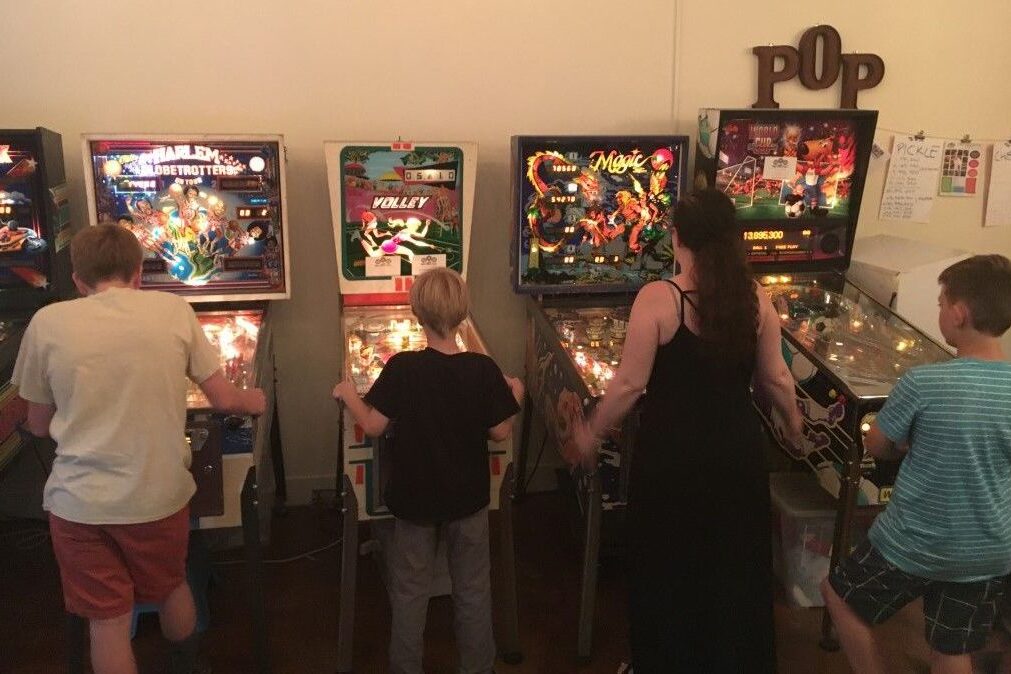
Even as the flash and sound of video games began to dominate, the electromechanical spectacle of the pinball machine retained a passionate, devoted fanbase. These machines provided a different kind of challenge: one based on physics, nudging, timing, and tactile skill rather than pure joystick reflexes. The appeal lay in the mechanical theatrics, the loud solenoid “thwack” of the flippers, the rhythmic bells and chimes, and the chaotic rush of a multi-ball session. Players who mastered the art of “trapping” the ball or executing a precision “flipper pass” were often treated like local heroes. For many, the joy of pinball was physical; a well-placed bump to the cabinet (without “TILT-ing” the machine) felt like a collaboration with the machine, leading to legendary, high-scoring games that cemented their three initials onto the local leaderboard.
10. High Score Glory and the Three-Letter Immortality
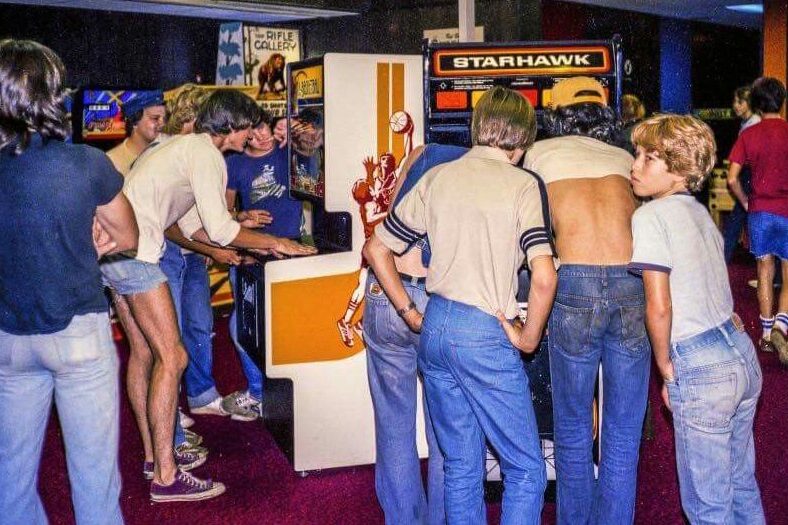
In the arcade ecosystem, the high score was the ultimate measure of status and bragging rights, a fleeting, tangible form of immortality. The simple ritual of achieving a score worthy of the leaderboard and entering your three-character initials was the moment every player chased. These three letters, sometimes a nickname, often a player’s simple initials, carried immense weight and local legend. Crowds would gather around the monitor, eagerly waiting for the machine to flash the “GAME OVER” screen to see if a legendary name had been dethroned or if a newcomer had made the list. This pursuit fueled intense but often friendly rivalries, creating a competitive community where local champions were revered, and their legendary scores served as the aspirational target for every quarter dropped.
11. Centipede and the Frantic Trackball
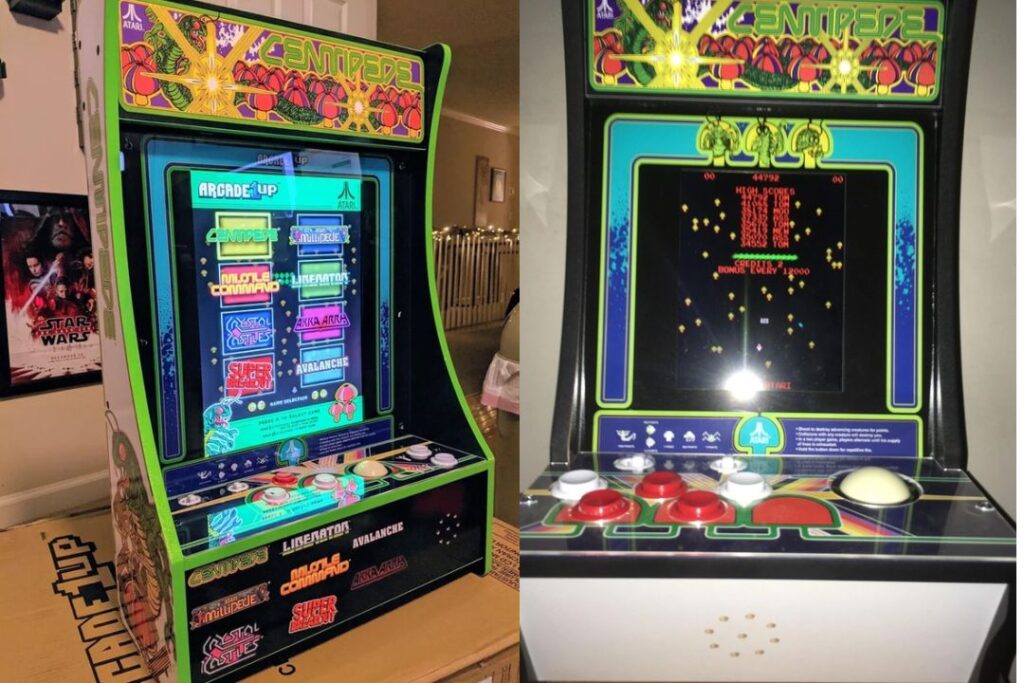
Released by Atari in 1980, Centipede stood out by introducing an innovative control scheme: the trackball. This large, heavy ball allowed players to move their “Bug Blaster” character rapidly and precisely across the bottom of the screen to shoot a massive, segmented centipede, which would split and multiply when hit. The physicality of the trackball was a key part of the experience, requiring players to roll furiously to keep up with the increasingly faster movements of the pixelated enemy and the raining flea-spawned mushrooms. The game’s vibrant, colorful presentation, coupled with the frantic, non-stop action of dodging spiders and blasting scorpions, made the experience feel intensely kinetic and immediate, pulling kids into a highly tactile battle for survival.
12. Frogger’s Test of Patience and Timing
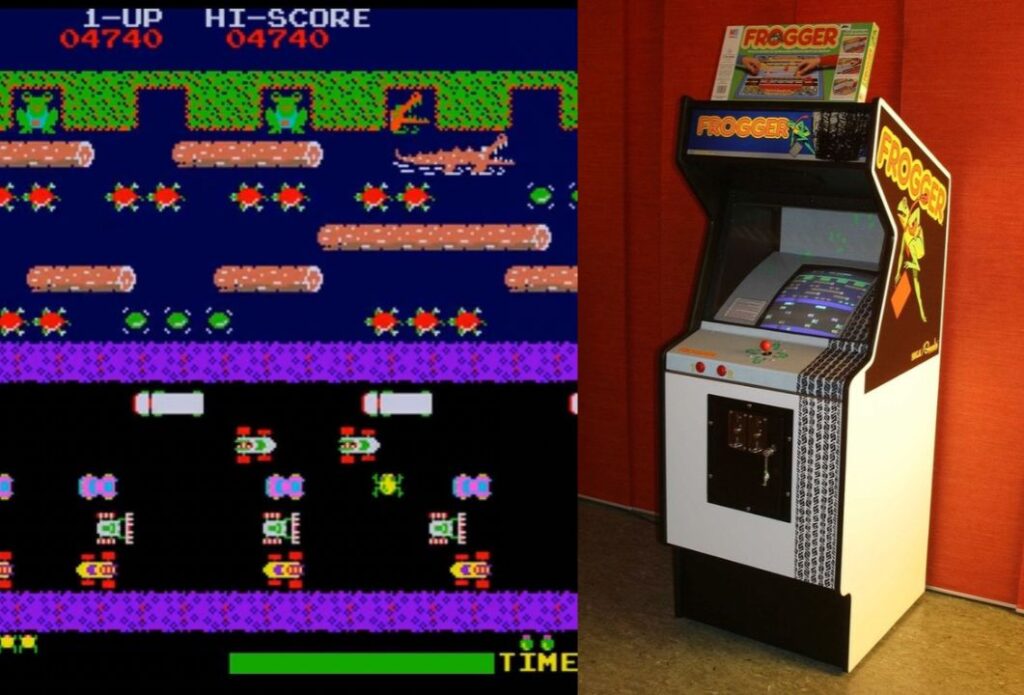
Konami’s Frogger (1981) presented a unique challenge that tested a player’s patience, timing, and nerve rather than pure blast speed. The premise was deceptively simple: guide five frogs, one at a time, across a treacherous road full of fast-moving vehicles and then navigate a wide river full of moving logs, turtles, and alligators to safety. The gameplay demanded a precise, split-second knowledge of the traffic and river patterns, turning every leap into a high-stakes decision. The final, exhilarating moment of success, leaping onto the final lilypad and watching the little frog icon light up at the top of the screen, provided an immense feeling of relief and satisfaction. It was a game where small mistakes often resulted in instant, frustrating death, making every successful journey feel like a true victory.
13. The Iconic Blacklight Carpet
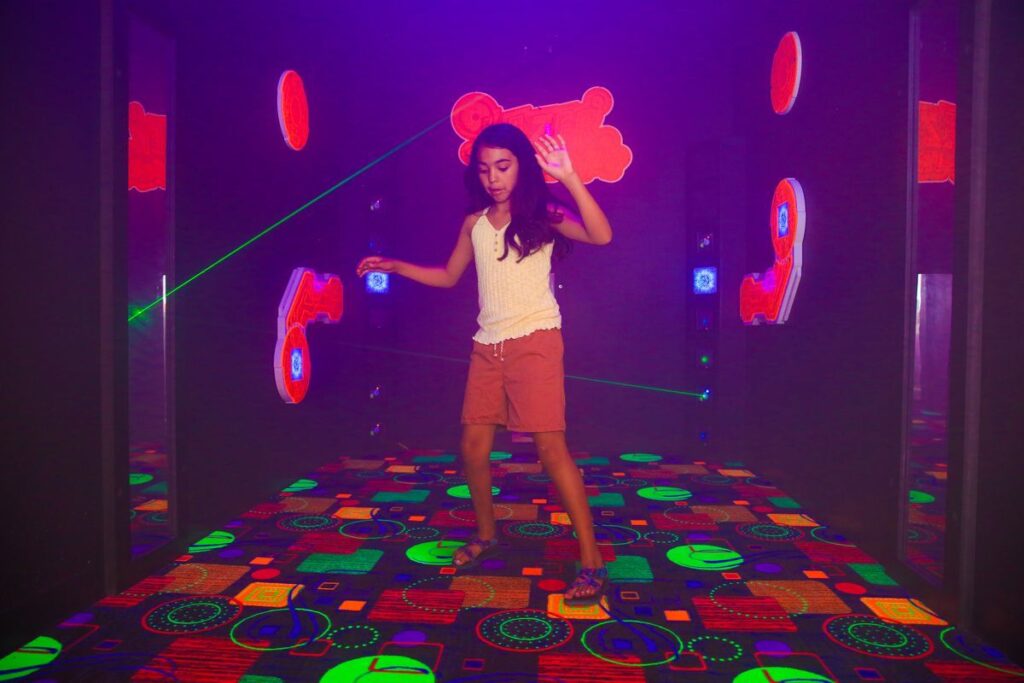
Stepping into a true ’70s or ’80s arcade was also an immersion in a distinct interior design aesthetic, most notably the psychedelic blacklight carpet. These carpets were typically dark, featuring swirling, bold, geometric patterns that came alive under the room’s omnipresent ultraviolet (UV) blacklights. The effect was mesmerizing, and it would glow with an eerie, electric-blue luminescence, making the very floor feel like part of the entertainment. The often cheap, durable carpeting served a practical purpose (hiding spills and scuff marks), but its vibrant, glowing patterns became an iconic visual hallmark, a piece of immersive ambiance that is etched in the memory as deeply as the games themselves.
14. Birthday Party Bliss and Pizza Power
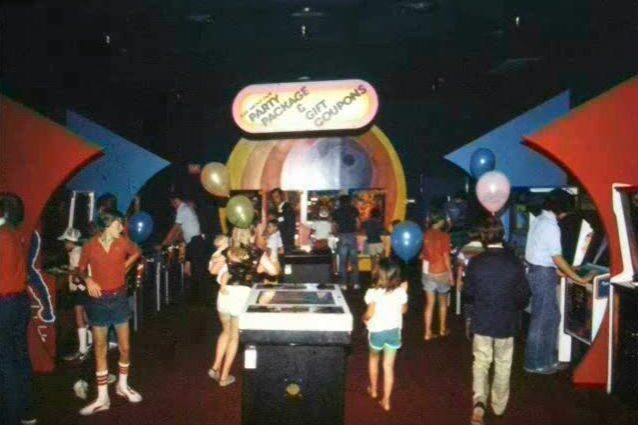
For a kid growing up in the ’70s and ’80s, an arcade was the ultimate birthday party destination, representing a fusion of social gathering and high-energy entertainment. The combination was simple but unbeatable: a celebratory stack of pizza and a steady supply of soda, coupled with an overflowing plastic cup of tokens. These parties were a perfect blend of competitive play and shared excitement, with friends cheering each other on as they raced to get the high score on Q*bert or teamed up for a quick round of Joust. The arcade setting provided a unique, thrilling, and slightly chaotic atmosphere that turned a simple party into a memorable adventure, where the constant sounds of electronic beeps and triumphant shouts created a backdrop no standard backyard celebration could ever replicate.
15. The Claw Machine Trap and False Hope
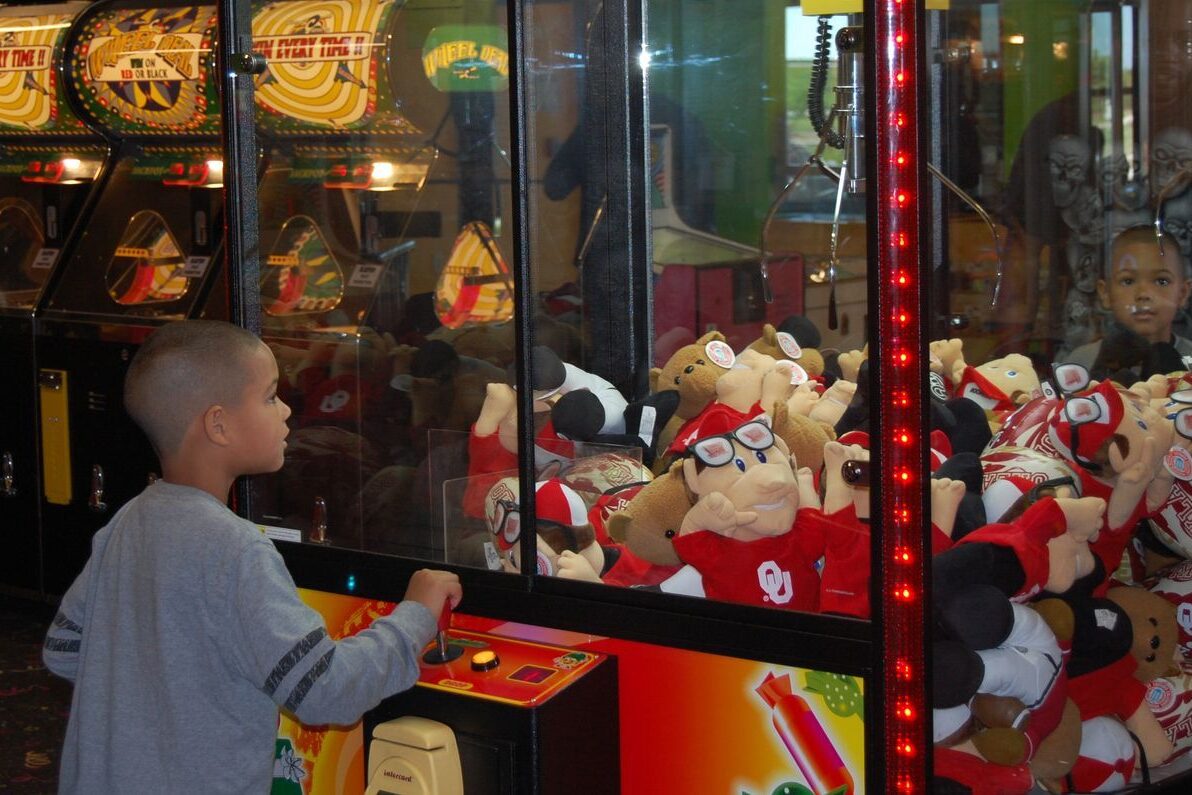
Positioned near the prize counter or exit, the Claw Machine (or “Claw Crane”) was a classic arcade fixture that was both a source of immense hope and constant disappointment. These brightly lit glass boxes, filled with an array of colorful stuffed animals and plastic toys, were designed to be an irresistible lure, swallowing quarters with an efficiency few other machines could match. The frustration was a universal experience: perfectly positioning the joystick, lowering the claw with bated breath, and watching as its grip would inevitably weaken at the moment of truth, dropping the coveted prize back into the pile. While the occasional, rare win was ecstatic, the machine was primarily an early, tough lesson in probability and the cost of false, glittering hope, yet the magnetic appeal to try “just one more time” was almost impossible to resist.
16. Dragon’s Lair and the Animation Sensation
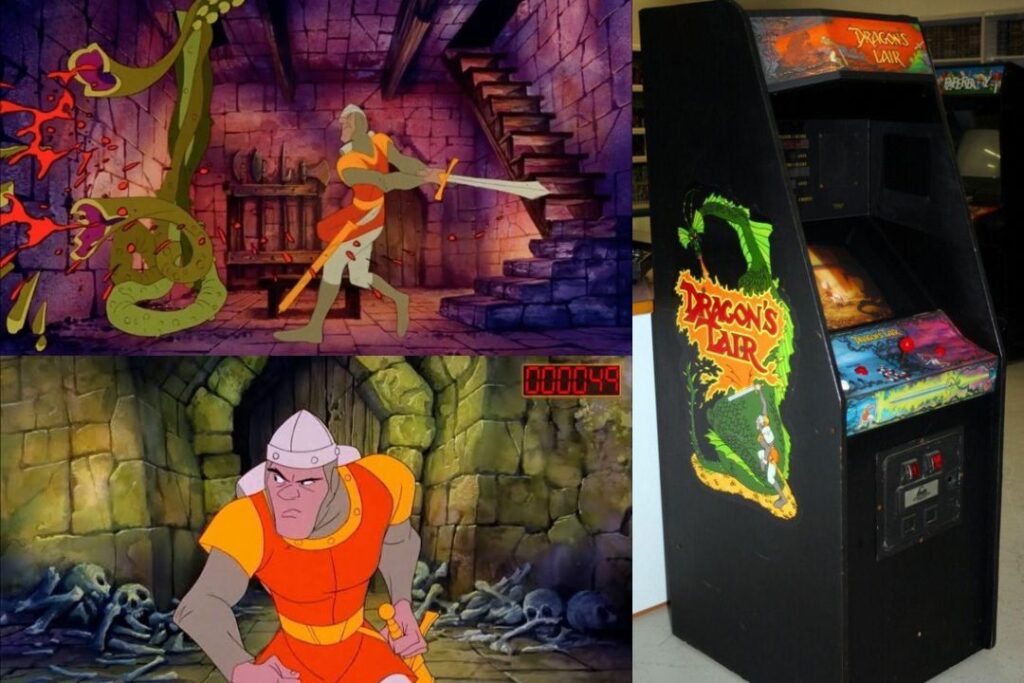
When Dragon’s Lair (1983) was released, it caused an absolute sensation by bringing the high-quality, fluid animation of a Saturday morning cartoon into the arcade. Unlike the pixelated graphics of its peers, the game used a LaserDisc player to stream full-motion video, making it look visually revolutionary. Players controlled the bumbling hero, Dirk the Daring, who navigated a castle of monsters, but the gameplay was fundamentally different, it was a Quick Time Event (QTE) game. Success relied on quickly memorizing the precise sequence of joystick moves and button presses required for each short scene, or Dirk would meet a gruesome, cartoonish end. This quarter-eating format and its high-cost technology meant the game was notoriously expensive, but the stunning visuals made the lines long, as players were willing to pay just to witness the next beautiful, impossible adventure.
17. Joust and the Flying Ostrich Phenomenon
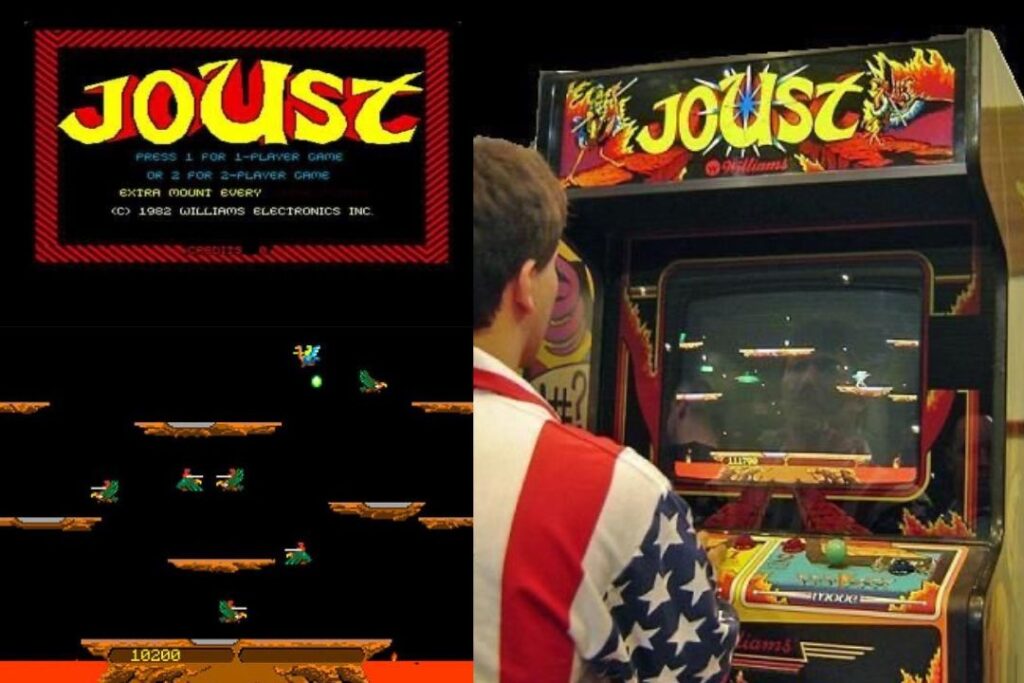
Midway’s Joust (1982) stood out for its utterly unique and quirky concept: knights riding giant, brightly colored ostriches or storks, flapping their wings in a gravity-defying battle to defeat enemy knights (who rode buzzards). It was a brilliant blend of platforming and aerial combat, with the goal being to strike your opponent when your lance was at a higher elevation. The game’s two-player co-op or competitive mode was a massive draw, allowing friends to work together or sabotage each other in a frantic battle over floating platforms and a lava pit below. The flapping sound effects and the chaotic aerial physics gave it an eccentric charm that made it an unforgettable cult favorite, demonstrating that even the most bizarre premise could become a compelling arcade smash.
18. Tempest and the Hypnotic Vector Graphics
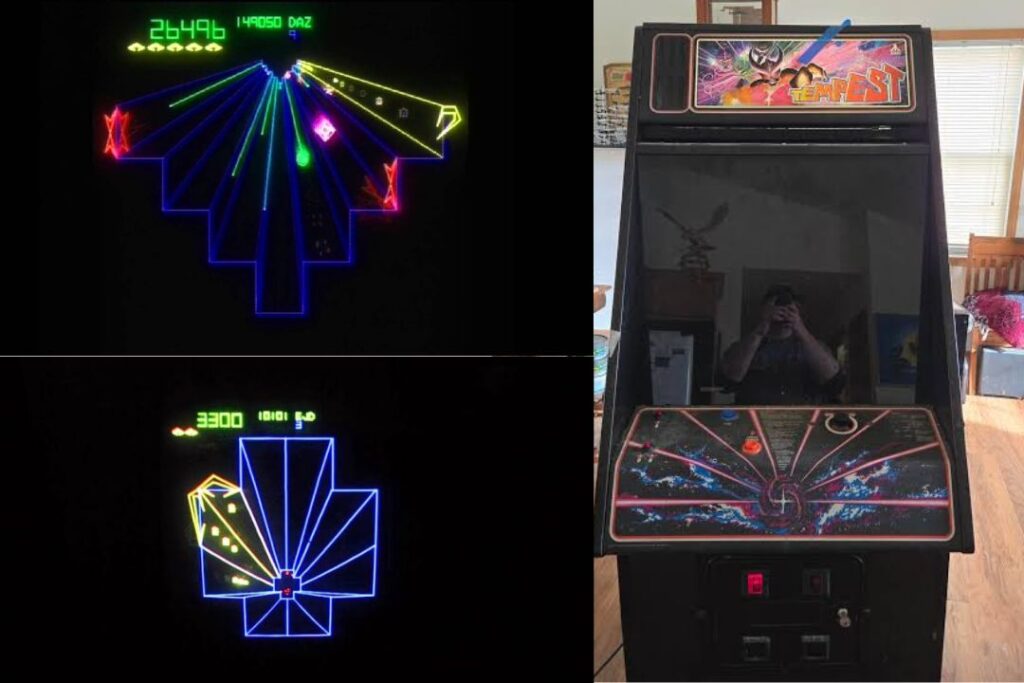
Atari’s Tempest (1981) was a masterpiece of both design and sound, immediately recognizable for its use of vector graphics, which gave it a distinctive, glowing, and futuristic look. Unlike raster (pixelated) games, Tempest’s graphics were composed of glowing lines of light that created deep, three-dimensional geometric tunnels. Players controlled a small “Claw” at the rim of the tunnel using a smooth, responsive rotary spinner control, blasting enemies that crawled up from the depths. Its unique perspective and the high-speed, relentless nature of the gameplay, which included a psychedelic jump to the next level called the “warp,” made it feel incredibly intense and otherworldly. The combination of the visually striking tube perspective and the hypnotic rotary control firmly established it as one of the most aesthetically and mechanically advanced games of its time.
19. The Orchestrated Sound of the Room
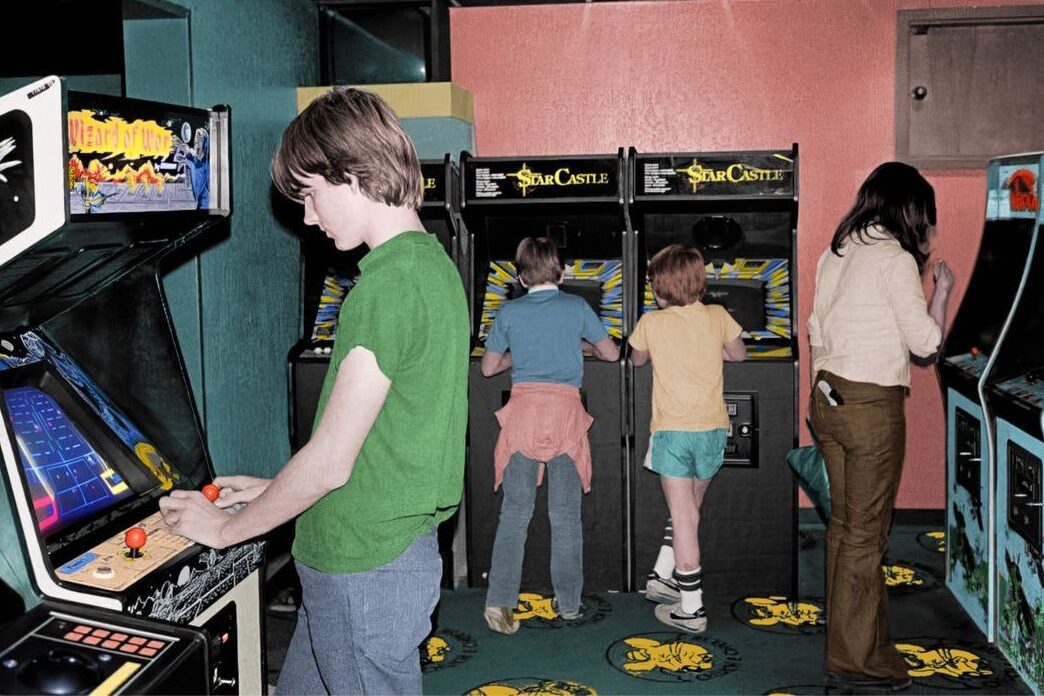
The single, most defining sensory experience of the arcade was its chaotic, powerful symphony of sound. Every cabinet contributed to a mesmerizing, non-stop sonic wall: the rhythmic “wakka wakka” of Pac-Man, the simple but tense beeps of Space Invaders, the heavy “ker-chunk” of the change machine, the loud bongs and thwacks of a pinball machine, and the constant, triumphant or frustrated shouts of the kids. This cacophony was not noise; it was a complex, beautiful, and intoxicating soundtrack of competitive joy and focused concentration. The individual sounds merged into a unified atmosphere that immediately signaled you were in a place of pure, electric entertainment, and even today, hearing a single sound effect from a classic game can instantly transport a person back to that very room.
20. Waiting in Line and Stacking Quarters
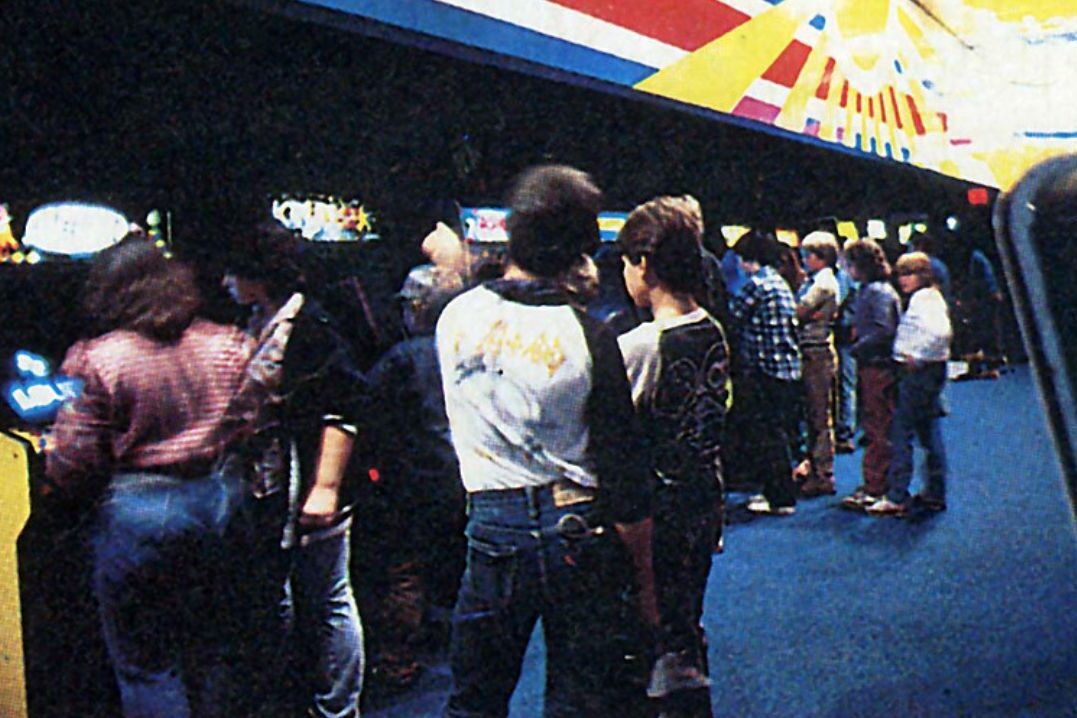
For the most popular, high-demand machines like Ms. Pac-Man or the latest release, a significant part of the ritual was the wait. Players would establish their place in line by stacking their quarters neatly on the console bezel or control panel, a silent, clear, and universally respected claim to the next game. Watching the person currently playing wasn’t simply a matter of passing time; it was a critical period of observation and strategy learning. You would study their movements, memorize enemy patterns, and note how they handled difficult sections. This ritual created an instant, shared community: a mix of silent coaching, cheering, and an undercurrent of rivalry, all focused on the glowing screen. The act of placing your quarter down was a small, satisfying commitment to the battle to come.
21. The Skee-Ball Corner and Endless Tickets
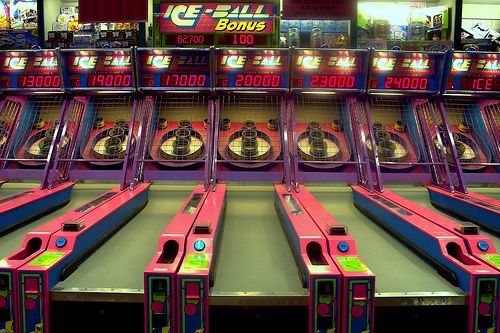
Often situated slightly away from the flashing video screens, the Skee-Ball lanes offered a welcome break and a different type of challenge. The simple, satisfying mechanic of rolling a heavy wooden ball up an incline and aiming for rings with various point values was instantly appealing. Skee-Ball was a pure game of skill, consistency, and a little bit of luck, rewarded not with high scores but with a satisfying, fluttering cascade of printed tickets. The long, rhythmic clatter of the wooden balls and the whir of the ticket dispensers were a comforting, secondary sound in the arcade’s symphony. It was an essential part of the experience, offering a tangible, redeemable reward for a break from the intense, quarter-to-life tension of the video games.
22. The Prize Counter Mirage
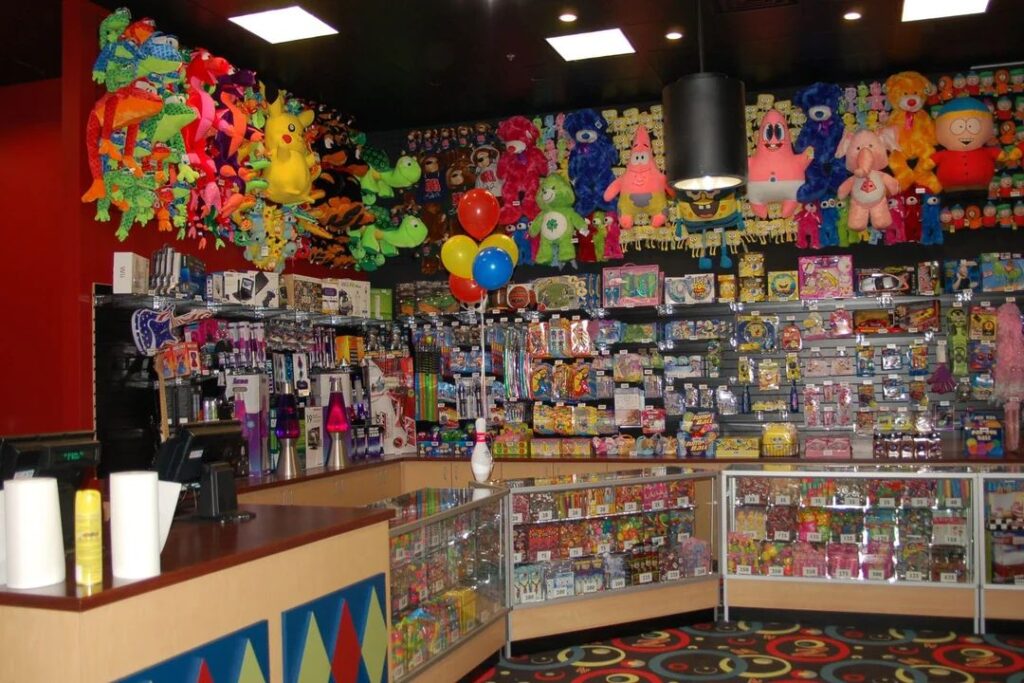
The prize counter, a glass case filled with colorful, tantalizing rewards, was the literal goal of the Skee-Ball and ticket-based games. Kids would clutch their hard-earned strips of paper, the corners often damp and crumpled, staring longingly at the top-tier prizes: boom boxes, digital watches, lava lamps, or large, brand-name toys. These items required tens of thousands of tickets, a truly Herculean effort that might take weeks or months of dedicated play. The reality, however, was that most kids walked away with the smaller, more practical trinkets, plastic whistles, sticky hands, cheap rubber balls, or massive amounts of low-grade candy. Despite the clear gap between the dream and the reality, the act of redemption was the satisfying conclusion to their ticket-winning efforts.
23. Closing Time Blues and Leftover Quarters

The magic of the arcade always had an expiration time, usually signaled by the sudden, harsh flicking on of the fluorescent ceiling lights and a staff member calling out, “Closing time, everybody, time to wrap it up.” This announcement was met with a chorus of groans. Kids felt a sudden, urgent anxiety about half-finished games, a high score that was almost achieved, a final life they couldn’t risk, or a final quarter that never got played. The walk out was a reluctant one, with the leftover quarters or tokens in their pockets serving as a promissory note for the following weekend. The abrupt return to the mundane world was a sharp contrast to the high-energy reality of the arcade, making the experience feel always too short and leaving behind a powerful longing for the next chance to play.
24. The Beginning of the End: The Console Era
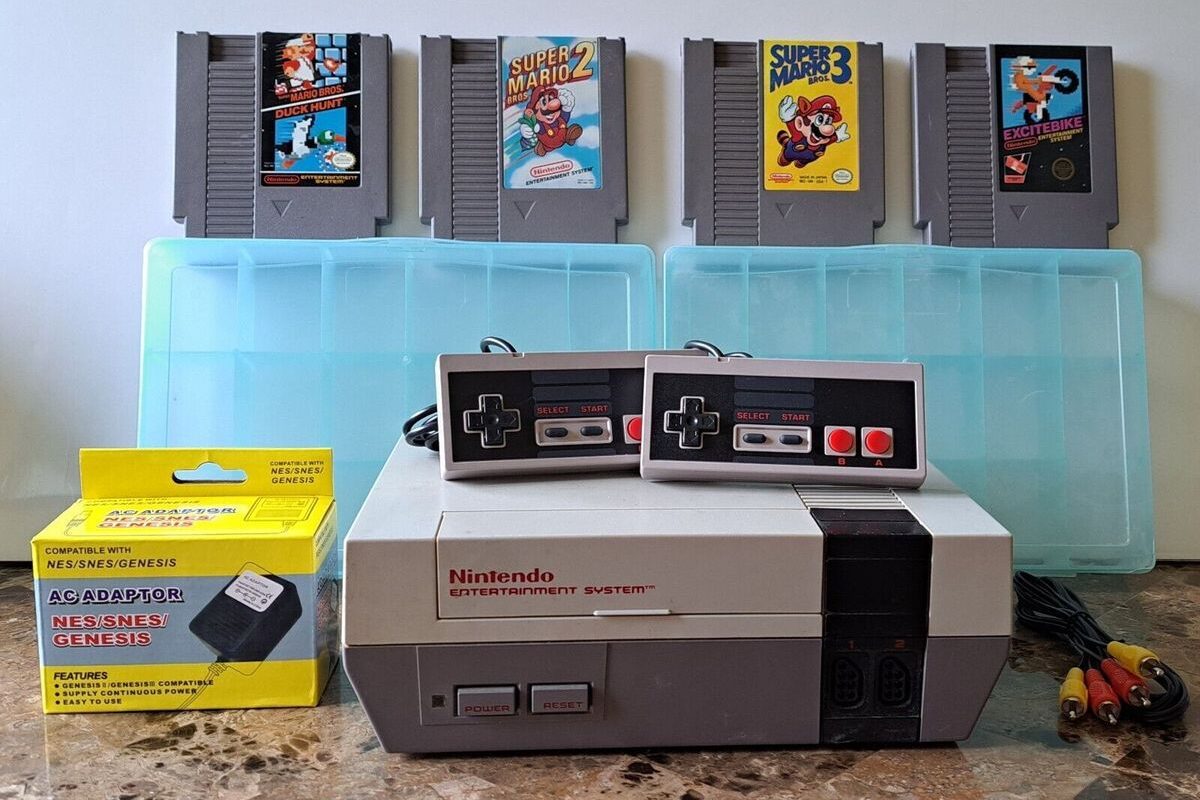
By the mid-to-late 1980s, the golden age of the dedicated arcade began its slow, inevitable decline, primarily due to the rise of powerful, affordable home video game consoles. Nintendo’s Nintendo Entertainment System (NES), released in the US in 1985, and Sega’s Master System brought high-quality, arcade-like experiences, often featuring ports of classic arcade titles, directly into the living room. For a one-time investment, kids could now play for hours without needing a constant supply of quarters. Arcades lost their monopoly on the best graphics and gameplay, transitioning from being the primary source of gaming to a supplemental, niche form of entertainment. However, the unique, vibrant memories of that brief, brilliant period, the sounds, the neon glow, and the community, remain eternally powerful.
The golden glow of the arcade may have dimmed, replaced by the solitary screens of home consoles, but the electric excitement of those rooms and the thrill of the three-letter high score live on. What was your most cherished arcade moment, or which game swallowed the most of your allowance?
This story 24 Arcade Memories Every Kid of the ’70s and ’80s Remembers was first published on Daily FETCH


